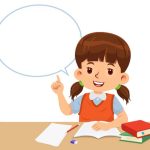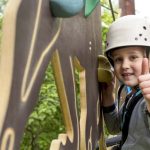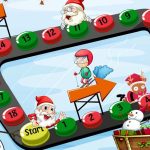Education is a journey that is unique for each individual. While some students grasp concepts quickly, others may need a bit more time and tailored support. In this blog post, we will look at some characteristics of slow learners to understand them better, by recognizing the signs, and most importantly, discovering effective teaching methods to ensure they reach their full potential.
Signs of a Slow Learner
Identifying a slow learner early on is essential for providing the necessary support. However, the considerations differ from case to case. Some common signs include:
- Delayed Milestones:
- Struggling with Basic Skills:
- Lack of Interest:
- Inconsistent Performance:
Slow learners might reach developmental milestones, such as reading or writing, later than their peers.
Difficulty in mastering fundamental skills like reading, writing, or basic maths.
A disinterest in academic activities or a hesitation to participate in class.
Inconsistent academic performance, with strengths in some areas and difficulties in others.
Challenges Faced by Slow Learners
Navigating the educational landscape as a slow learner comes with its unique set of challenges. Recognizing and addressing these obstacles is essential for creating an inclusive and supportive learning environment.
- Social Stigma:
- Emotional Impact:
- Limited Resources:
- Difficulty in Advocacy:
- Teacher Preparedness:
- Parental Concerns:
- Long-term Impact:
Slow learners may face social challenges, including potential stigmatisation from peers. The frustration of not grasping concepts as quickly as others can lead to a sense of inadequacy and erode self-esteem.
The continuous struggle to keep up academically can take an emotional toll on slow learners. Frustration, anxiety, and a fear of failure may become pervasive, hindering their overall well-being.
In some educational settings, limited resources for special education and support services may pose a challenge. Slow learners may not receive the individualised attention and resources they need to thrive.
Advocating for oneself can be challenging, especially for younger slow learners. Expressing their specific needs and seeking the necessary support may be a skill that needs to be developed over time.
Educators might face challenges in adapting their teaching methods to accommodate slow learners. Limited training in special education strategies or resources can hinder their ability to provide effective support.
Parents of slow learners may grapple with concerns about their child’s academic future. Navigating the educational system to secure appropriate resources and support can be a daunting task.
If not addressed early on, the challenges faced by slow learners can have long-term consequences, affecting their academic and professional trajectories. It is crucial to intervene promptly to mitigate potential setbacks.
Teaching Methods for Slow Learners
Teaching slow learners requires a patient and empathetic approach. Understanding the diverse needs of slow learners enables educators to implement effective teaching methods that cater to their learning styles. Here are some strategies to consider:
- Multisensory Learning:
- Individualised Learning Plans:
- Peer Tutoring:
- Frequent Feedback:
- Establish a Positive Environment:
- Set Realistic Goals:
- Encourage Questions:
- Use Technology:
- Build a Support Network:
Engage multiple senses in the learning process, incorporating visual aids, hands-on activities, and auditory elements.
Develop personalised learning plans that address specific strengths and weaknesses of a student.
Encourage collaboration by pairing slow learners with peers who can provide support and encouragement.
Regular feedback helps slow learners track their progress and provides insights for both educators and parents.
Create a classroom environment that promotes inclusivity, understanding, and patience.
Break down lessons into manageable tasks and set achievable goals to build confidence.
Promote a culture where asking questions is encouraged, ensuring that slow learners feel comfortable seeking clarification.
Leverage educational technology to provide interactive and engaging learning experiences.
Collaborate with parents, special education professionals, and support staff to create a comprehensive support network.
Overcoming Challenges: A Collaborative Effort
In the diverse landscape of education, recognizing and addressing the needs of slow learners is an integral part of ensuring that every student reaches their full potential. By understanding who slow learners are, identifying the signs, and implementing effective teaching methods, educators and parents can create an environment where every learner can thrive.
At EuroKids, we believe in providing a nurturing environment where every child’s individual needs are recognized and taken care of. Our play school programs are designed in diverse learning styles, ensuring that each child receives the attention and support they deserve. Visit EuroKids today to create a more promising and inclusive tomorrow for your kids.
FAQs: Teaching Slow Learners
Q1: What defines a slow learner?
Ans: Slow learners are individuals who may require more time and support to grasp and process information compared to their peers. This does not indicate a lack of intelligence but rather a need for tailored teaching strategies.
Q2: How early can signs of slow learning be identified?
Ans: Signs of slow learning can be identified as early as preschool or kindergarten. Delayed milestones and difficulties in basic skills may indicate potential challenges.
Q3: Are slow learners less intelligent than their peers?
Ans: No, being a slow learner does not imply a lack of intelligence. It simply means that individuals may need different techniques and more time to master certain concepts.
Q4: What teaching methods work best for slow learners?
Ans: Effective methods include differentiated instruction, multisensory learning, individualised learning plans, peer tutoring, and providing frequent feedback.
Q5: How can educators create an inclusive learning environment?
Ans: Educators can foster inclusivity by promoting a positive classroom culture, setting realistic goals, encouraging questions, using technology, and building a strong support network.
Q6: Can slow learners catch up with their peers over time?
Ans: With the right support and interventions, slow learners can make significant progress and narrow the gap with their peers. Early identification and targeted strategies play a crucial role.
Q7: Is there a one-size-fits-all solution for teaching slow learners?
Ans: No, every slow learner is unique. It’s essential to employ a variety of strategies and remain flexible, adjusting teaching methods based on individual strengths and weaknesses.
Q8: Can technology be beneficial for slow learners?
Ans: Yes, educational technology can provide interactive and engaging learning experiences, catering to different learning styles.
Q9: What role do peers play in supporting slow learners?
Ans: Peers can play a vital role by engaging in peer tutoring, promoting a positive and inclusive atmosphere, and offering encouragement. Collaboration and understanding contribute to a supportive learning community.
Q10: How can parents support their slow learners at home?
Ans: Parents can support their child by creating a conducive learning environment, communicating with teachers, advocating for necessary resources, and offering emotional support.
















